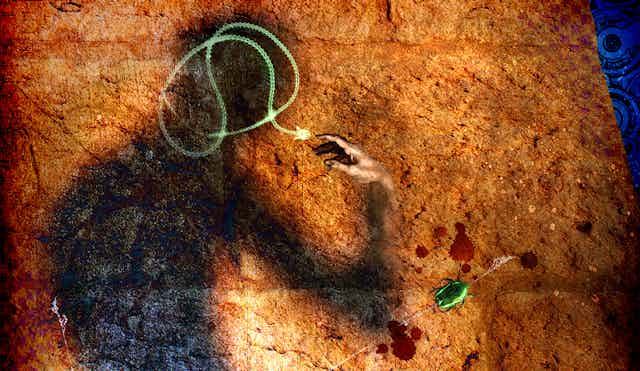This expert reaction comes via the Australian Science Media Centre:
CERN (the European Organisation for Nuclear Research) has this evening announced that the long-sought Higgs boson probably exists, after experiments conducted in the Large Hadron Collider yielded results that are consistent with its existence.
The Higgs boson is the final particle in the Standard Model of physics, and has remained hidden from scientists’ reach until a series of experiments confirmed its presence.
Below Australian and UK physicists respond.
Professor Peter Higgs of the University of Edinburgh (who postulated the theoretical particle, which is named after him, in the 1960s):
Scientists at CERN are to be congratulated on today’s results, which are a great achievement for the Large Hadron Collider and other experiments leading up to this.
I am astounded at the amazing speed with which these results have emerged. They are a testament to the expertise of the researchers and the elaborate technologies in place.
I never expected this to happen in my lifetime and shall be asking my family to put some champagne in the fridge.“
Higgs Field Animation from AusSMC on Vimeo.
Professor Anthony Thomas, Director of the Adelaide Node of the ARC Centre of Excellence in Particle Physics at the Terascale. He is based at the University of Adelaide’s School of Chemistry and Physics:
Today’s announcement that the Higgs boson has been discovered at CERN represents the most important and profound discovery in particle physics in almost 30 years. The Higgs represents the key missing piece of the jigsaw puzzle that is the famous Standard Model of nuclear and particle physics.
It has been anticipated for more than four decades and, were it not there, theorists all over the world would have been back to their drawing boards in desperation.
Now that it has been found, there is not only a palpable sense of relief but a great deal of excitement as we begin to pore over the details of the various experimental results to see what hints they may have for completely new physics which goes beyond the Standard Model.
Dr Csaba Balazs is Director of the Monash Node of the Centre for Particle Physics at the Terascale, Monash University, Melbourne:
The existence of the Higgs boson is a cornerstone of Einstein’s dream. In 1955 Einstein died without fulfilling his lifelong dream: the unification of all physical laws in a single equation. Since then thousands of physicists have pursued the quest for unification.
Various theories have been worked out that might realise the dream; however we do not know which one, if any, is correct.
In 1983 a glimpse of hope for unification emerged in the form of the discovery of two particles called the W and Z bosons. The existence of these particles proved that the unification of two out of four fundamental forces is possible.
However, the unification was not complete without the existence of a hypothetical third particle: the Higgs boson. So the existence of the Higgs particle became one of the cornerstones of unification.
In 1991 the construction of the Superconducting Super Collider started. This machine was going to be powerful enough to find the Higgs boson. Unfortunately, in 1993 the project was cancelled by the US Congress, and Einstein’s dream once again was fading away.
Today, after 50 years of its theoretical introduction, we have learned that the Higgs boson probably exists! This is a tremendous step ahead in our fundamental understanding of unification and in realising Einstein’s dream.
Associate Professor Kevin Varvell is Director of the Sydney Node of the ARC Centre of Excellence for Particle Physics at the Terascale. He is based in the School of Physics at the University of Sydney:
This could hardly be a more exciting time for our field of research. The Higgs boson has been searched for using progressively larger and more sophisticated accelerators and detectors for 30 or 40 years now.
While it is too early to say yet whether the new particle which has been seen is the Higgs predicted by our Standard Model of Particle Physics, or something even more interesting, it is fair to say that we have taken a very big step forward today. Now the hard work begins to flesh out what this new thing really is.
At the conference centre in Melbourne leading up to the broadcast from CERN, I was struck by the buzz going around the place. Some knew what one of the two large experiments ATLAS and CMS would say, some knew nothing, and many had heard rumours or even seen leaks.
What everyone had in common was a sense of anticipation and the feeling that the field may not be the same come the evening.
Dr Paul Jackson is a lecturer in high energy particle physics in the School of Chemistry and Physics at the University of Adelaide and works with the ARC Centre of Excellence in Particle Physics at the Terascale. He is also team leader of the Adelaide group on the ATLAS experiment at the CERN LHC:
The Higgs boson gives each type of particle its own mass. Its existence is required to explain several features of our current model of particle physics, and evidence for the Higgs will further validate this model.
Hints from data at the Large Hadron Collider collected in 2011 pointed to a region in mass at about 125 GeV (equivalent to about 125 proton masses) where some anomalous activity may be occurring.
The data collected in 2012 so far have been analysed and are demonstrating excesses consistent with a signal which at first glance looks consistent with the expectation of a Standard Model Higgs Boson.
If confirmed to be the Standard Model Higgs this will provide a crucial piece in our understanding of how particles in the universe are assigned masses. Its measurement could have far-reaching effects on research in fundamental particle physics.
Further reading:

